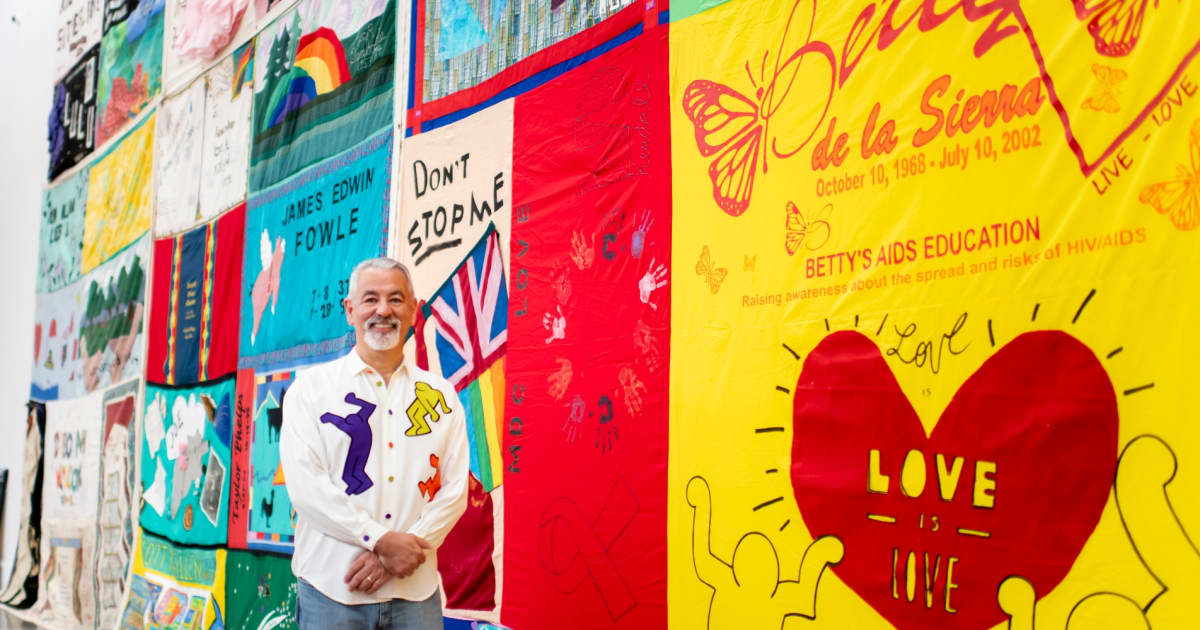
Huston Ochoa MSW ’20 weeps silently as his former professor and another man unfurl the 12-foot-square, stitched-together fabric. He sees there at the bottom, for the first time in nearly three decades, the colorful rectangle that his 3-year-old self and extended family decorated in honor of his deceased parents.
Their names—Elena Alfonso Ochoa and Orson Ochoa—appear in elegant lettering above a candid photo of a smiling young couple, framed by messages of love handwritten by their son’s aunts, uncles and cousins. Heartbreakingly, the panel dedicated to the pair borders the one honoring Huston Ochoa’s two maternal uncles, Wilfredo and Fernando Brito.
The patchwork forms but one of thousands that collectively constitute the national AIDS Memorial Quilt. Housed in San Francisco, it commemorates the lives lost to a modern-day scourge, one that predates the coronavirus pandemic by nearly 40 years and yet offers lessons that resonate in current times. The totem returned to South Florida at the request of Shed Boren, a professor in the Stempel College of Public Health & Social Work and Honors College fellow, who in 1992 developed a program at Mercy Hospital to respond to the needs of the growing number of people suffering with AIDS.
For years a death sentence—to date more than 33 million people worldwide have perished from illness related to AIDS—the once-mysterious, now-treatable disease first came to attention in California in the early 1980s and seemed to strike healthy people out of the blue. Soon it was understood that most contracted it through intercourse, and victims’ predominantly homosexual orientation provoked widespread judgment and outright hate in an era when few gays lived openly. A small percentage contracted it through blood transfusions, as did Huston Ochoa’s father, who subsequently passed it on to his wife.
The quilt with the South Florida connection will hang through July 18 at the Coral Gables Museum along with hundreds of other artifacts gathered by Boren to illustrate the narrative of AIDS both locally and beyond: 66 posters from the Wolfsonian-FIU collection—some promoting empathy, others encouraging safe sex—that present diverse perspectives and messages around the global health crisis; scientific articles by retired FIU Professor William Darrow, who served as a leader and researcher with the CDC during the early days of the epidemic and who features in a best-selling book and subsequent major motion picture about that time; photographs of the annual White Party that began in 1985 at Miami’s Vizcaya Museum & Gardens as a fundraiser for AIDS care; clips from the Miami Herald that include one telling the story of Huston Ochoa, “The Boy Orphaned by AIDS,” and others that follow the contentious legislative battle over gay rights in Miami-Dade, prompted by the increased attention paid to issues affecting homosexual citizens as a result of the contagion; and so much more.








